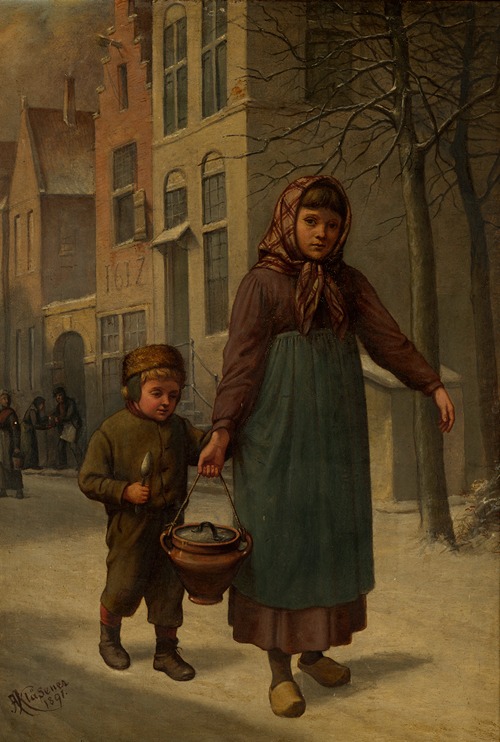
Alexander Kläsener
Alexander Kläsener, also known as Klaesener or Kläzener, was a German-Dutch church painter and Nazarene of the Düsseldorf School.
Kläsener, the son of a border guard of the Koblenz regional council, was born in Vallendar and grew up temporarily in Goch on the Lower Rhine, where his parents, who saw him as destined for a clerical career, sent him to grammar school in Emmerich am Rhein. In 1842, he attended the Düsseldorf Art Academy as a "Freischüler", and in 1843 the 2nd class there under Karl Ferdinand Sohn. When his parents died in 1845 and 1846 and he was no longer able to pay for his art studies, he enlisted in the Prussian army, which transferred him to Trier as a draughtsman of topographical maps. From 1852 to 1854, he completed his art studies in Antwerp. In 1859 he was employed by the architect Pierre Cuypers. From 1866 he lived in Alkmaar, where he created Stations of the Cross for the St. Laurentius Catholic Church and in 1867 married Margaretha Catharina, née Kuipers, who gave birth to seven children.
Kläsener mainly painted Stations of the Cross and murals. His Stations of the Cross in the Church of St. Jacob (St. Jacobus de Meerdere) in The Hague and his depiction of the miracle of blood in the Catholic Church of St. Lawrence (Sint Laurentiuskerk) in Alkmaar (1874-1880) are well known. Kläsener is considered a representative of the Nazarene movement, which he had become acquainted with during his time in Düsseldorf. From 1876, he belonged to the Genootschap van beeldende kunstenaars "Kunst zij ons doel" in Alkmaar. He was the "directeur-leraar" (director and teacher) of this artists' cooperative from 1892 to 1908 and was also a member of the "Commissie van Toezicht" (Supervisory Board) of the Alkmaar Municipal Museum until old age. One of Kläsener's students was the baker's assistant Jan Witte (1868-1950), who was apprenticed to him from 1886 and was later revered as "'t heilig bruurke" (West Frisian dialect group: the holy brother).
